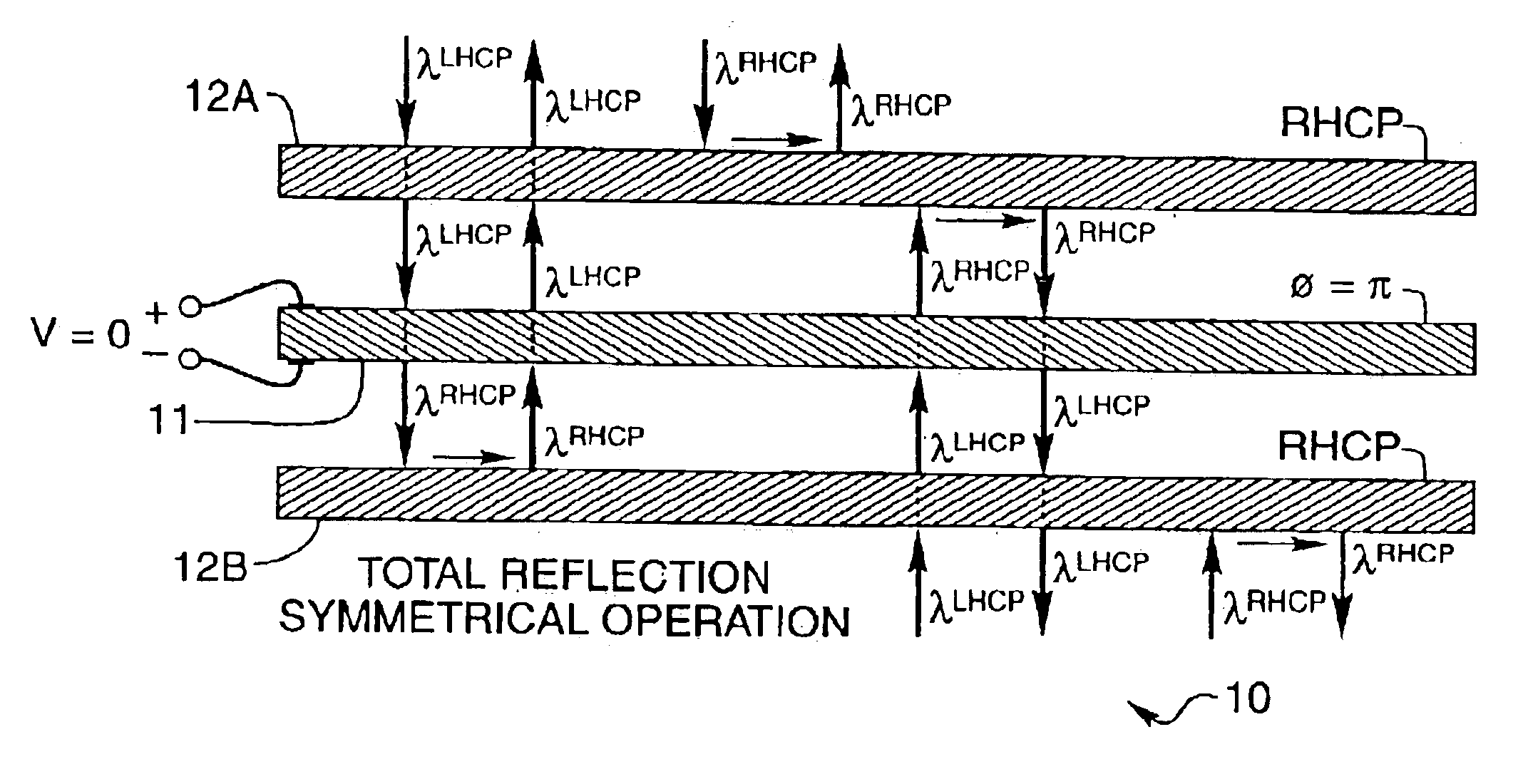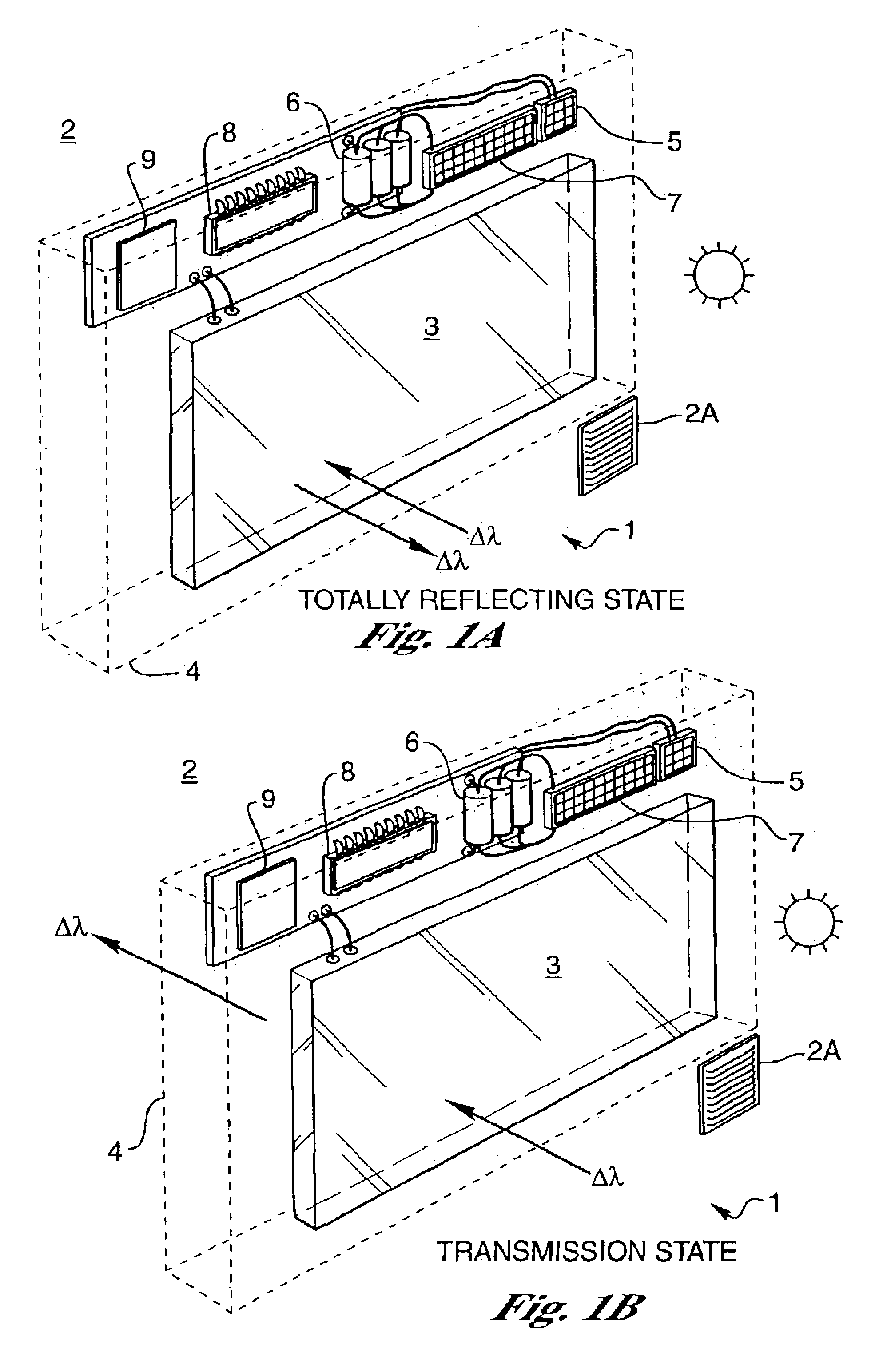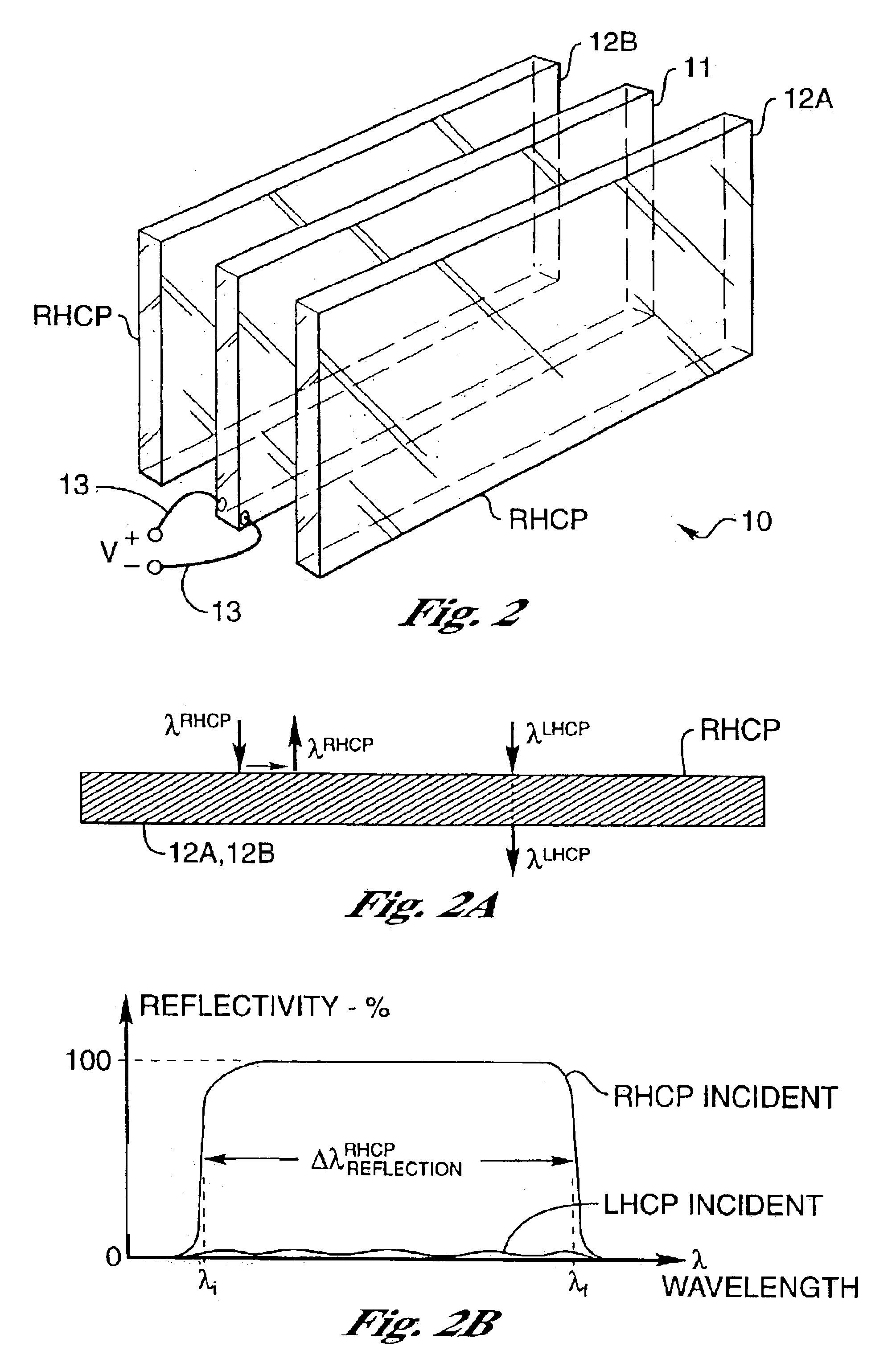Electro-optical glazing structures having total-reflection and transparent modes of operation for use in dynamical control of electromagnetic radiation
a technology of electromagnetic radiation and optical glazing, applied in the direction of polarising elements, door/window protective devices, instruments, etc., can solve the problems of color fading, increase in interior temperature, and form is not without problems, so as to avoid shortcomings
- Summary
- Abstract
- Description
- Claims
- Application Information
AI Technical Summary
Benefits of technology
Problems solved by technology
Method used
Image
Examples
case i
Vertical-to-Parallel Configuration (Case I)
[0216]In this configuration, the cell is constructed so that the host nematic liquid crystal adopts a spontaneous alignment in homeotropic state. The ITO substrate is coated with an alignment agent favorable for such an alignment. No mechanical rubbing is necessary. If the host liquid crystal has a negative dielectric anisotropy, it can be reoriented into a homogeneous state by an electric field (E-field). In this case, state “A” of the host LC refers to homeotropic, and state “B” to homogeneous; while state “Aclc” and “Bclc” of the CLC pigments refer to perpendicular and parallel to the cell surface, respectively. Thus the panel can be switched from transparent to polarizing reflection state. Varying the strength of the E-field can change the final reflectivity of the panel.
case ii
Vertical-to-Parallel Configuration (Case II)
[0217]In this configuration, the cell is constructed so that the host low molecular weight (LMW) cholesteric liquid crystal adopts a spontaneous alignment in homeotropic state. The pitch of the LMW CLC can be tuned either inside or outside of the CLC pigment reflection spectral region. The ITO substrate is coated with an alignment agent favorable for homeotropic alignment. If the host liquid crystal in cholesteric order has a negative dielectric anisotropy, it can be reoriented into a planar state by an electric field (E-field). In this case, state “A” of the host LC refers to homeotropic, and state “B” to planar; while state “Aclc” and “Bclc” of the CLC pigments refers to perpendicular and parallel to the cell surface, respectively. Thus the panel can be switched from transparent to polarizing reflection state. Varying the strength of the E-field can change the final reflectivity of the panel.
FPSLC with Polymer Network
[0218]In this prefer...
PUM
| Property | Measurement | Unit |
|---|---|---|
| temperatures | aaaaa | aaaaa |
| spectral wavelengths | aaaaa | aaaaa |
| spectral wavelengths | aaaaa | aaaaa |
Abstract
Description
Claims
Application Information
 Login to View More
Login to View More - R&D
- Intellectual Property
- Life Sciences
- Materials
- Tech Scout
- Unparalleled Data Quality
- Higher Quality Content
- 60% Fewer Hallucinations
Browse by: Latest US Patents, China's latest patents, Technical Efficacy Thesaurus, Application Domain, Technology Topic, Popular Technical Reports.
© 2025 PatSnap. All rights reserved.Legal|Privacy policy|Modern Slavery Act Transparency Statement|Sitemap|About US| Contact US: help@patsnap.com



